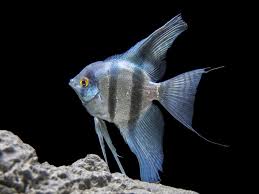
Lacquer art, a traditional and exquisite form of craftsmanship, holds a revered place in many Asian cultures, particularly in Vietnam, China, and Japan. Known for its intricate designs and brilliant finish, lacquer art has evolved over centuries, with each culture adding its own unique touch to this ancient craft. One of the most significant and recurring motifs in lacquer art is the dragon. These mythical creatures, representing a blend of power, protection, and mysticism, are often featured in traditional lacquer artworks. This article explores the role of dragons in traditional lacquer art, their symbolism, and the intricate techniques used to incorporate them into these stunning works of art.
1. The Symbolism of Dragons in Asian Cultures
Dragons hold a profound significance in many Asian cultures, where they are seen as symbols of power, fortune, wisdom, and protection. Unlike the fearsome dragons of Western mythology, the dragons in Eastern traditions are often benevolent and revered as protectors of the land, the seas, and even the heavens. In China, the dragon is one of the most important symbols in the imperial culture, representing the emperor’s power and the divine protection of the country. In Vietnam, the dragon (known as “rồng”) is associated with the creation myth of the nation, believed to be the ancestor of the Vietnamese people, symbolizing strength and prosperity.
In lacquer art, the dragon often embodies all these virtues—representing the might of nature, the guardianship of communities, and the blessings of prosperity. The dragon is a key figure in both religious and secular artwork, with its representation varying according to the specific cultural context and the purpose of the artwork.
2. Dragons in Vietnamese Lacquer Art
In Vietnamese lacquer art, the dragon holds a particularly prominent place. The art of lacquer painting in Vietnam has a history dating back thousands of years, with intricate and detailed designs being created on wood, bamboo, and silk. The Vietnamese dragon, which is commonly featured in lacquer art, is often depicted with long, winding bodies, large scales, and serpentine tails. The dragon is typically shown in a dynamic pose, often in the midst of flight or surrounded by swirling clouds and waves, symbolizing the force of nature and the endless cycle of life.
One of the most famous forms of lacquer art in Vietnam that features dragons is the “sơn mài” technique, a method of painting that involves layering multiple coats of lacquer on a surface, followed by polishing and engraving. The dragon motifs in these artworks often appear on traditional furniture, decorative panels, and even on large murals in temples and palaces.
In Vietnamese lacquer art, dragons are not just decorative elements; they carry deep symbolic meanings. The dragon represents the unity of heaven and earth, and its depiction often includes clouds, waves, and mountains, representing the harmonious balance of nature. In addition, the dragon is considered a guardian of the home and family, and it is believed that a well-painted dragon can bring good fortune, protect against evil spirits, and ensure the well-being of its owner.
3. The Techniques of Traditional Vietnamese Lacquer Art
The creation of lacquer art is a meticulous and time-consuming process that requires great skill and patience. In traditional Vietnamese lacquer art, the process begins with preparing the wooden base, which is then coated with multiple layers of lacquer. These layers are left to dry, and then they are carefully polished to achieve a smooth, glossy finish. After this, the artists start applying the design, often using gold or silver leaf, and engraving intricate patterns into the surface.
To create a lacquer painting of a dragon, the artist must first sketch the dragon’s form on the base, ensuring that the lines are both flowing and dynamic. The dragon is often depicted in mid-flight, with its body twisting and turning in a serpentine fashion. The artist then uses a combination of fine brushes and carving tools to add intricate details, such as the scales, claws, and facial features of the dragon. The surrounding elements, such as clouds, waves, or lotus flowers, are also carefully added, each carrying its own symbolic meaning.
The final step in the process is to polish the piece until it achieves a glossy, reflective surface. The layers of lacquer create a depth and richness that enhances the visual appeal of the artwork, and the shiny finish adds a sense of mysticism and transcendence to the dragon’s image. The resulting piece is not only a work of art but also a spiritual object believed to possess the protective and prosperous qualities of the dragon.
4. Dragons in Chinese Lacquer Art
In China, the dragon has been a central figure in lacquer art for centuries. The art of Chinese lacquerware dates back to the Shang dynasty (16th to 11th century BCE), and it has since evolved into one of the most refined and prestigious forms of Chinese craftsmanship. The dragon, often portrayed in dynamic and flowing forms, is a key motif in Chinese lacquer art, where it appears on everything from royal thrones to ceremonial objects.
The Chinese dragon is typically depicted as a long, sinuous creature with antler-like horns, a serpentine body, and five claws. It is often shown rising above clouds or water, symbolizing power and control over the natural elements. In Chinese lacquer art, dragons are frequently paired with other auspicious symbols, such as the phoenix, the lotus, or the peony, to convey a message of balance, prosperity, and harmony.
Chinese lacquerware often incorporates intricate carvings and inlays, and the process of creating lacquer art is similarly labor-intensive. Artists apply multiple layers of lacquer, each layer requiring time to dry and cure. After the lacquer has been applied, the artist uses specialized tools to carve the design into the surface, revealing the rich patterns beneath. Gold and silver leaf are often used to enhance the dragon’s image, making it appear more majestic and divine.
In Chinese lacquer art, dragons are not just protective symbols but are also representations of imperial power. During the Ming and Qing dynasties, the dragon was a symbol of the emperor’s authority, and it was used extensively in the decoration of royal thrones, robes, and ceremonial objects. The emperor was often referred to as the “Son of the Dragon,” emphasizing the divine and unchallenged nature of his rule.
5. Dragons in Japanese Lacquer Art
In Japan, the tradition of lacquer art is closely associated with Zen Buddhism and Shintoism, both of which involve a deep reverence for nature and its spiritual power. Dragons in Japanese lacquer art are often depicted in a similar way to those in Chinese art—long, winding creatures that float above clouds, water, or waves. However, in Japanese tradition, dragons are sometimes shown as less menacing and more serene, embodying the calming, protective aspects of nature.
One of the most iconic examples of Japanese lacquer art featuring dragons is the “Namban” style, a type of lacquerware that emerged during the Nanban period (1543–1614), when Japan was first introduced to European influence. In this style, dragons were often incorporated into larger decorative motifs that included floral designs, birds, and landscapes, reflecting Japan’s deep connection to nature and the spiritual world.
Japanese lacquer artists often use gold and silver leaf in conjunction with the traditional “urushi” lacquer to create vibrant, detailed images of dragons. The dragons are frequently depicted in circular or symmetrical compositions, emphasizing their role in maintaining balance and harmony. In Japanese lacquer art, dragons are considered protectors and are often included in ceremonial objects used in religious rituals or feasts.
6. The Enduring Legacy of Dragons in Lacquer Art
The representation of dragons in traditional lacquer art remains an enduring symbol of power, protection, and mysticism. The intricate techniques involved in creating lacquer art, along with the rich symbolism of the dragon, have made this craft an essential part of the cultural heritage of many Asian countries. From Vietnam to China to Japan, lacquer art continues to celebrate the beauty and strength of the dragon, a creature that transcends time and culture.
As lacquer art continues to evolve in the modern era, the dragon remains a powerful and evocative symbol in contemporary artworks. While modern interpretations may incorporate new materials and styles, the essence of the dragon as a guardian of the earth, protector of the family, and bringer of prosperity remains unchanged. Whether seen in the glossy finish of a Vietnamese lacquer panel or the intricate designs of a Chinese throne, the dragon continues to captivate the imagination and inspire awe, standing as a testament to the enduring legacy of traditional lacquer art.
Conclusion
Dragons in traditional lacquer art are more than just decorative motifs—they are powerful symbols of cultural identity, spiritual beliefs, and the reverence of nature. The representation of dragons across Vietnam, China, and Japan in lacquerware showcases the universal appreciation for these mythical creatures and their role as guardians of both the physical and spiritual realms. Through the meticulous craftsmanship of lacquer artists, the dragon continues to play a vital role in preserving ancient traditions while imparting lessons of strength, balance, and protection for generations to come.









